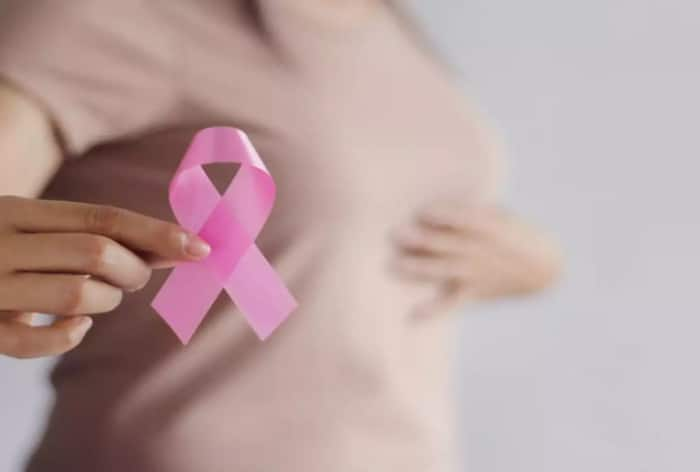Hereditary breast cancer accounts for 5–10% of cases; These cases are believed to be caused by direct gene changes (mutations) inherited from the parents.
Breast cancer, a major global health disease affecting millions of people, poses a complex conundrum. Understanding the link between genetics and this disease is key to unlocking new approaches to prevention, diagnosis and treatment. Forget the simplistic idea of a single “breast cancer gene.” Reality is much more complex, a rich pattern created by different elements, each playing an important role in their own way. The most prominent players are the BRCA1 (Chromosome 17) and BRCA2 (Chromosome 13) genes, which are responsible for repairing DNA damage. Transmutations in these genes, which are often passed down through families, significantly improve the risk of breast cancer. But that’s not where the story ends. Additional genes, such as CHEK2 and PALB2, contribute to supportive capacity. Genetics, meanwhile, is only one element of the whole. The risk equation is influenced by a combination of factors such as age, lifestyle decisions and environmental exposure. Understanding these relationships is essential so that people can make informed decisions about their health and well-being.
Hereditary breast cancer accounts for 5–10% of cases; These cases are believed to be caused by direct gene changes (mutations) inherited from the parents.
- BRCA1 and BRCA2: An inherited mutation in one of the two genes is the most common cause of hereditary breast cancer. These genetic factors help produce proteins in healthy cells that repair broken DNA. The mutated forms of these genes can cause abnormal cell proliferation, which can result in cancer.
- You are more likely to develop breast cancer if you receive a mutated copy of either gene from your parents.
- A woman with a BRCA1 or BRCA2 gene mutation may have a 7 in 10 chance of developing breast cancer by the time she is 80 years old.
- Ovarian cancer and several other cancers are also more common in women who carry one of these gene mutations. (Men who inherit one of these mutations in the genes are also more likely to develop breast and other cancers.)
Additional genes:
- PALB2: A protein produced by the PALB2 gene has an interrelationship with the protein of the BRCA2 gene. The changes in this gene can increase the risk of breast cancer.
- CHEK2: Another gene that typically helps with DNA repair is CHEK2. The risk of breast cancer is increased by CHEK2 mutations.
Signs and Symptoms:
- A lump or thickening in the breast or forearm.
- Changes in the size, shape or appearance of the breast
- Nipple discharge (not breast milk)
- Cellulite or wrinkling of the skin
- Redness, flaking or cracking of the nipple or breast skin.
Risk factors: beyond the genetic realm
- Regular exercise:Make exercise a regular part of your routine. The American Cancer Society recommends at least 150 minutes of moderate-intensity exercise or 75 minutes of vigorous-intensity exercise each week.
- Balanced diet:Provide a balanced diet that favors whole, nutritious foods such as fruits, vegetables and whole grains. It is also important to limit processed foods, red meat, and sugary drinks to reduce the risk.
- Healthy Weight Management:Watch your weight and aim for a healthy BMI. This is especially crucial after menopause, as being overweight can increase the chance of developing breast cancer.
- Limit alcohol:Drink alcohol in moderation, or better yet, limit your consumption completely. Excessive alcohol consumption can increase the risk of breast cancer.
Scientific progress
- Personalized medicine: There is great potential for more targeted and successful medicines by tailoring care based on each patient’s unique genetic profile.
- Gene editing:Investigating ways to correct harmful mutations through gene editing technologies could potentially prevent the development of cancer.
- Better screening tools:Advances in imaging and blood testing offer more accurate and personalized detection methods.
Remedies and preventive measures
- Consider genetic counseling: If you have a deep family history or other risk factors, hereditary psychoanalysis can help you identify your alternatives and make informed choices.
- Adopt a healthy lifestyle: Incorporate the healthy lifestyle habits mentioned above.
- Stay informed:Stay up to date with the latest improvements in research and medication options.
As we delve deeper into the complex relationship between genetics and breast cancer, one truth stands out: knowledge is a powerful tool. By understanding our genetics and making lifestyle changes, combined with the use of advanced genetic testing, we can be proactive in preventing and detecting this disease early. This exploration of our genetic makeup not only illuminates the complexity of breast cancer, but also highlights the importance of collaboration between individuals, healthcare experts and researchers in the relentless fight against this formidable disease. By staying informed and actively involved, we can strive for a future where genetics plays a minimal role in the development of breast cancer.
(Inputs by Dr. Ankit Shah, Consultant – Surgical Oncology – HCG Cancer Center, Vadodara)


